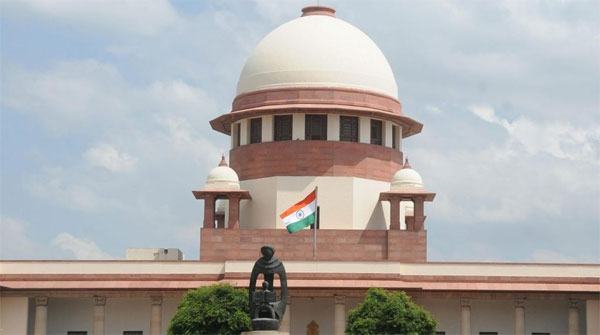Daijiworld Media Network - New Delhi
New Delhi, Sep 12: In the wake of escalating security concerns following recent bomb threats targeting the Delhi and Bombay High Courts, the Supreme Court of India has imposed strict restrictions on photography and videography using mobile phones within its high-security zone.
As per a circular dated September 10, now made public, the Supreme Court has empowered its security personnel to stop anyone—including staff members, advocates, litigants, and visitors—from capturing images or videos inside the restricted zone of its premises. The move is seen as a preemptive security tightening amid rising threats to judicial institutions.
The circular also lays down specific protocols for media coverage. Journalists and broadcasters are permitted to conduct interviews or live news reporting only from the designated media area near the court's lawn, which lies within the lower security zone. Any violation of these protocols could result in media personnel being barred from entering the high-security area for a period of one month.

The court has warned that any breach of the guidelines by Registry staff will be taken seriously. For other stakeholders like advocates, interns, or law clerks, the Supreme Court has directed relevant authorities—including State Bar Councils or Bar Associations—to take appropriate disciplinary action. For government employees, the heads of departments will be asked to enforce internal rules against any violations.
This clampdown on mobile-based photography and media activity comes on a day when hoax bomb threats sent shockwaves through the Delhi and Bombay High Courts. Both courts had to halt proceedings and evacuate their buildings as bomb squads swept the premises.
The Delhi High Court received a chilling email that claimed a judge’s chamber would "detonate shortly." It also referenced a sinister plot to "recreate" the 1998 Coimbatore blasts in Patna through alleged ISI involvement. Although the threats were later confirmed as hoaxes, they triggered widespread alarm, disrupted court work, and prompted bar associations to urge lawyers to stay away for the day.
Security has since been heightened across multiple court complexes, and intelligence agencies are tracking the source of the emails. Against this backdrop, the Supreme Court's latest directive is being viewed as a necessary step to secure India’s highest judicial institution from both physical and digital intrusions.